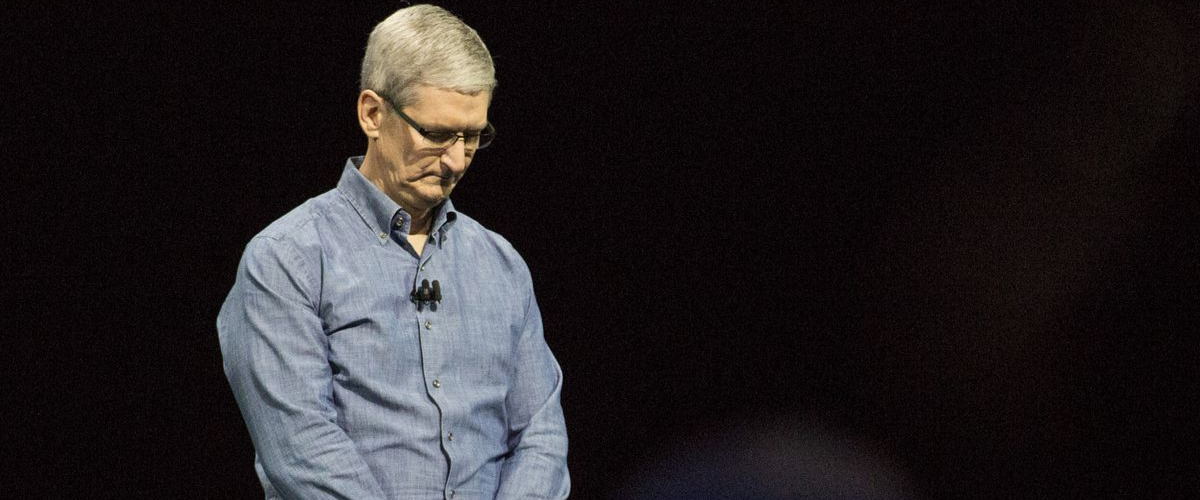Apple Lost Buffett’s Favor for Slighting the Chinese Market?

According to Apple’s second-quarter financial report, Berkshire Hathaway’s holdings in Apple have drastically decreased from 789 million shares at the end of March to 400 million shares, nearly halving.
This move is very rare.
Apple is Berkshire’s largest holding, and Buffett, who has rarely invested in tech stocks throughout his career, has favored Apple since he started buying its shares in 2016. In the first three years, he bought nearly $36 billion worth of Apple stock, and since then, the position has always been maintained at over 40%.
Buffett once said that Apple is his most important business outside of his insurance group, with a total return rate of nearly 800% over the eight years of holding.
Now, with Buffett’s clearance-like action, is it possible that Apple is really in trouble?
Apple’s market capitalization had just recently made a strong recovery.
In recent years, AI has been the hottest concept in the stock market. After a significant drop in the first quarter due to lagging in the AI field, Apple, which heavily promoted the AI concept, seemed to have found a magic formula, and its stock price surged.
In June, Apple launched Apple Intelligence, officially announced its collaboration with OpenAI, and promised that the iPhone 16 would come with AI systematically integrated. These moves led the industry to almost unanimously consider Apple as the benchmark for AI smartphones.
The results were immediate. Between April and July, Apple’s stock price increased by 30%. On July 8th, Apple saw gains for five consecutive trading days, setting a new closing market value record and surpassing Microsoft to reclaim the top spot; on the 11th, it finally broke the $3.5 trillion mark.
 Apple’s stock price change over the last six months | Source: CNBC
Apple’s stock price change over the last six months | Source: CNBC
Just as Apple was riding high on its AI hype, news of Buffett’s “halving” of his Apple holdings broke, prompting investors to follow siut and reduce their shares. Consequently, on August 5th, Apple’s market capitalization plummeted by $160.9 billion overnight.
Why did Buffett suddenly reduce his holdings? To understand his selling logic, we need to review his buying logic.
In 2016, when Buffett first bought into shares of Apple, it surprised many people. Firstly, Buffett had never been known to invest in tech stocks; secondly, in 2016, everyone believed that the smartphone market had reached its peak, and this was indeed the case. Moreover, since Buffett was not attracted by Apple during the Steve Jobs era, why did he change his mind during the Tim Cook era?
The answer lies in Buffett’s emphasis on shareholder value in his stock-picking philosophy, and his “moat” theory.
During the Jobs era, Apple primarily invested its cash flow into the research and development of new products to please consumers. In the Cook era, Apple’s R&D capabilities have been widely questioned, with a significant portion of its cash flow being used for stock buybacks to reward shareholders.
In the former era, Apple was an aggressively competitive technology company, creating technological legends but also deterring investors like Warren Buffett. In the latter era, Apple maintained its technological barriers to avoid competition, which aligns perfectly with Buffett’s conservative investment preferences.
However, Apple is forced to participate in competition now, which contradicts the core of the moat theory. At the same time, it is allocating more cash flow towards R&D, increasingly evolving towards a typical technology company that Buffett struggles to deal with. Moreover, Buffett has inherent doubts about AI. Analyst Shanahan from Edward Jones Investment said he would not be surprised if Berkshire Hathaway sold its remaining shares of Apple by the end of this year. Buffett’s skepticism at least suggests that Apple’s strategic expansion in the era of large AI models will not be a smooth journey.
Apple’s situation is becoming increasingly precarious.
Apple’s greatest hope, the iPhone 16, carries significant uncertainty, and Apple has been making blunders, distancing itself further from its largest sales market, China.
 In August, Apple released its financial report for the third quarter of the 2024 fiscal year (the second quarter of the 2024 calendar year), reversing the decline in both revenue and net profit seen in the second quarter and achieving growth. | Data: Apple
In August, Apple released its financial report for the third quarter of the 2024 fiscal year (the second quarter of the 2024 calendar year), reversing the decline in both revenue and net profit seen in the second quarter and achieving growth. | Data: Apple
However, the sales of Apple’s flagship hardware product, the iPhone, have still not managed to reverse their downward trend.
Apple’s biggest hope for its smartphones currently lies in the iPhone 16. Integrated with the first-generation AI, it is expected to drive a wave of upgrades in September. Cook has specifically increased this year’s production target to between 90 million and 100 million units, a 10% increase compared to the same period for the iPhone 15 series.
But this hope faces two significant uncertainties:
Firstly, the AI integration of the iPhone 16 has to be delayed. Cook initially planned for the iPhone 16 to be launched with built-in AI in September, but according to the latest news, the update for Apple Intelligence may be postponed until next year. On the other hand, even if the AI feature can be launched on time, is it that tempting? Is AI advanced enough? Do consumers really have such a high demand for it? Opinions within the industry have been divided for a long time.
Moreover, in the Chinese market, which accounts for over 30% of Apple’s users, the implementation of AI features in the iPhone 16 faces significant challenges. On July 30th, Apple released the iOS 18.1 Developer Preview Beta 1 update, officially launching the Apple Intelligence beta version. This update supports only the iPhone 15 Pro and iPhone 15 Pro Max, allowing users to try out Apple’s AI features in advance.
However, according to feedback from Chinese users, the domestic version of the iPhone currently cannot use Apple AI. Non-domestic iPhones need to set the iPhone language and Siri language to English (United States) and the device region to the United States to use the feature.
The complexity of AI regulation and privacy considerations in different regions makes Apple AI unlikely to thrive in China: just two weeks after Apple announced its collaboration with OpenAI in June, the latter declared that it would stop supplying shell software to mainland China. Apple does not own its independent AI technology, so if OpenAI refuses to cooperate with Apple, the company will have to collaborate with local AI providers to launch AI services in China. As a result, the AI integration for the domestic version of the iPhone will likely be even more delayed and fraught with difficulties, and the final outcome will be hard to match the OpenAI version. In short, Cook’s Apple AI trump will be unusable for Chinese users in the short term and won’t be very effective in the long term either.
In fact, the iPhone is gradually losing its grip on the Chinese market, which is an urgent issue Apple needs to address.
The latest financial report shows that Apple’s revenue has grown in the Americas, Europe, Japan, and other Asia-Pacific regions, but it has declined year-on-year for four consecutive quarters in Greater China. In the second quarter of this year, Apple’s shipments in China were pushed out of the top five by Chinese domestic brands, relegating it to the “others” category in statistical charts.
 Data: Canalys
Data: Canalys
This is the best sales figure Apple has achieved in the Chinese market after aggressively cutting prices and promoting sales though. From September last year to May this year, the price of the iPhone 15 was reduced by more than ¥2,300 ($320), marking the largest price drop in Apple’s history. On JD.com, the starting price for the iPhone 15 Standard is around ¥4,500 ($626), leaving little room for further reductions.
The “price war” hasn’t been effective. Does that mean Chinese consumers are no longer interested in buying smartphones?
No, the overall smartphone sales in the Chinese market are still growing, with a year-on-year increase of 8.9%.
In other words, it’s not that Chinese consumers are uninterested in buying smartphones, but rather that they are becoming increasingly disinterested in buying iPhones.
In the future, when the AI-featured iPhone is released with different configurations for domestic and international versions, it is likely to further deter more Chinese consumers.
Chinese users not only have to tolerate lower-spec iPhones but also a higher “Apple tax” compared to users in other regions. Amid this critical point, Apple is even causing further issues in its largest market, China, by forcing consumers to choose between Apple and two Chinese apps.
 Apple is increasing pressure on Tencent and ByteDance to cooperate in blocking payment bugs in WeChat and Douyin. | Source: Bloomberg
Apple is increasing pressure on Tencent and ByteDance to cooperate in blocking payment bugs in WeChat and Douyin. | Source: Bloomberg
Highly profitable software services have always been a significant feature of Apple’s business model. As of the end of June, Apple’s software services revenue has set new records for six consecutive quarters, growing 14% year-on-year in the second quarter to $24.213 billion, accounting for 28% of Apple’s total revenue. A major source of this revenue is the 15-30% commission Apple takes from in-app purchases, known as the “Apple tax.” Its latest focus is on the lucrative market of popular mini-games and mini-series on WeChat and Douyin. Previously, these types of businesses were directed to external payment links to avoid commission, but now they are required to pay the fee. Apple has threatened to suspend updates for WeChat and Douyin if they do not comply.
This move effectively holds Apple consumers as “hostages,” pressuring Tencent and ByteDance to capitulate. As of now, Tencent and ByteDance have yet to respond. The Chinese have long suffered from the “Apple tax.” China has the highest “Apple tax rate” in the world, with standard enterprises needing to pay 30% of their revenue to Apple. This is 13% higher than in the EU, 4% higher than in South Korea, and 3% higher than in the United States.
 iOS App Store Commission Rate by Country
iOS App Store Commission Rate by Country
According to Sensor Tower, the “Apple tax” in China contributed over ¥40 billion (about $ 56 million) in 2023. If this commission rate remains unchanged for the next five years, the Chinese market will cumulatively pay over ¥280 billion (about $40 billion).

In March of this year, the European Union imposed a massive fine of 1.84 billion euros on Apple for illegally obstructing app developers from directing users to bypass the official App Store to subscribe to third-party services. In comparison, China, as one of Apple’s largest markets, should have more rights to bargain. However, Apple continues to “bully” Chinese companies, forcing 250 million Chinese Apple users to “take sides.” On one hand, China provides the most users and pays the highest “Apple tax.” On the other hand, the implementation of Apple Intelligence AI in China faces significant challenges, with performance still in question, forcing Chinese users to endure inferior service.
It’s unreasonable to expect Chinese users to tolerate using lower-spec phones while paying more “Apple tax.” Few people can endure such unfair treatment. If Apple does not change its discriminatory policies towards Chinese users, iPhone sales in the Chinese market will further decline in the upcoming era of large AI models.




